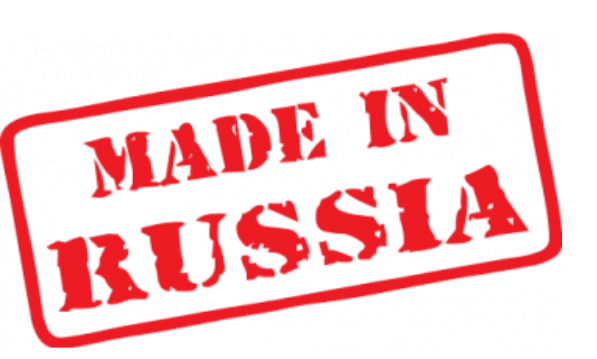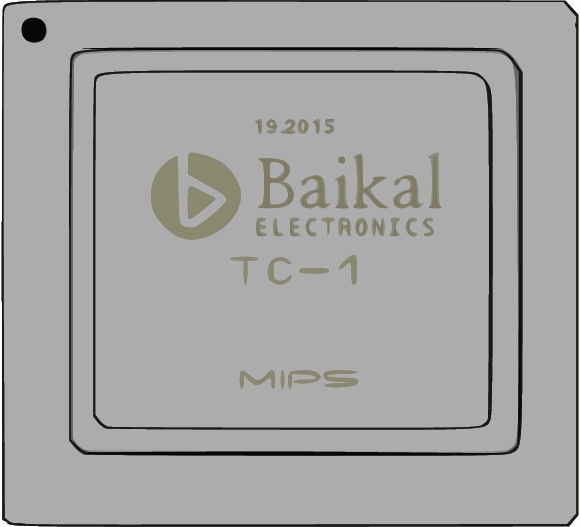Import Substitution and Import Independence in the Production of Domestic Electronics
We must remove critical dependence on foreign technology.
V.V. Putin
At present, many Russian companies are involved in solving the problem of import independence formulated by the President of the Russian Federation V.V. Putin Understanding the difference between total import substitution and import independence is extremely important.

The task of importindependence
First of all, we note that the import substitution in the literal sense of the term (development, organization of production of domestic analogs of imported chips for the purpose of substitution in REA) is impossible and unacceptable. Impossibility is predetermined, first of all, by the fact that the range of our imports has grown to many thousands of items. In those rare cases when an analogue of the import scheme is still being created, replacement is almost impossible, since it requires the validation tests of REA (for which it was designed), the processing of technical documentation, the re-issuance of economic relations, the receipt of additional funding. It should also be borne in mind that we are not technologically able to reproduce some imported chips in a reasonable time. Yet the main objection against import substitution is that that the refusal of foreign-made microcircuits is unacceptable, since it dooms Russian radio electronics to a progressive lag and even the loss of some of its areas. It is enough to remind that all our supercomputers, which are in the world TOP-500 rating, use exclusively imported microprocessors, which are very heavy for domestic microelectronics [1].
Taking this into account, import substitution, for example, is quite possible in the production of consumer goods (meat, fruit cheese, etc.). The term “import independence” should be referred to high technology. In our case - to the production of sophisticated electronics. What is allowed to ordinary people is unacceptable for specialists - radio engineers.
Under import-independence is further meant to guarantee the complete security of vital equipment (and its ECB) and minimize the risks for the rest of the equipment (and its ECB) in any force majeure situations. We consider equipment (and ECB) to be vital, the failures of which can have disastrous consequences for the country [1].
Next, we will discuss the possible ways and real steps taken by manufacturers of electronic equipment in the direction of ensuring the independence of computing modules from foreign technologies and restrictions in the supply of components.
You control the processor - you control the process
The need to own key technologies can be illustrated by many examples. In particular, the use of so-called “bookmarks” and undeclared capabilities in foreign processors and computing complexes is widely known.
One of the most famous cases occurred during the military operation “Desert Storm”, when no Iraqi Mirage took off due to the failure of the navigation system. This system was disabled on all fighters at once with just one radio signal. It was simply incorporated into the design.
About virus programs in computers and controllers of the Iranian atomic program is also well known. The most famous virus is Win32 / Stuxnet, which was detected not only on ordinary users' computers, but also in industrial systems that control automated production processes at the Bushehr nuclear power plant.
Also in the media you can find a huge amount of information about the found bookmarks in mobile computers for harsh operating conditions.
Here are some examples of malicious software detected, bookmarks, and undeclared capabilities of microcircuits found in imported products.
Computrace LoJackdeveloped by Canadian firm Absolute Software. The program sends geolocation data to a remote server, has the ability to remotely lock a computer and erase information from disks on commands from Absolute Software's servers. In addition, a full cycle of remote laptop management is possible, starting with updating the BIOS, installing and removing any programs and ending with reinstalling the OS.
The official purpose of the program is to prevent data leakage and the use of a laptop in case of its theft or loss [2].
Network chips Broadcom line VSM 57xx. This chip has its own flash memory (you can also connect external flash memory on a dedicated SPI interface), its own RAM, its own RISC processor. In fact, this is a computer in a computer, and programs that are flashed inside its flash memory are executed both on its own embedded RISC processor and on the central processor of the computing unit during system initialization (advanced BIOS on peripheral controllers).
According to the documentation, there is only 16KB of flash memory inside the chip, but an additional 8MB of programs and data can be placed on the external interface.
In conjunction with the program Computrace LoJack, such a network chip can do anything ... [2].
Intel Management Engine (ME). Subsystem, which is built into all modern computer platforms (desktops, laptops, servers, tablets) with Intel chipsets. Intel ME is the only execution environment that:
• works even when the computer is turned off (but the power is on);
• has access to all the contents of the computer's memory;
• has out-of-band access to the network interface.
This subsystem is a hardware and software basis for various system functions and Intel technologies. Their implementation is included in the Intel ME firmware. One such technology that uses Intel ME's several special privileges is Active Management Technology (AMT).
AMT is a technology for remote administration of computer systems for which official support for Intel vPro is claimed. AMT provides remote and out-of-band (via an independent auxiliary TCP / IP channel) access to manage the settings and security of a computer, regardless of the power state (remote on / off of the computer) and OS [3].
Ways to solve the problem of import independence
Modern processor module consists of several hundreds of various electronic components and a variety of materials. It is hardly reasonable to be like medieval feudal lords and try to reproduce the entire diversity of the world electronic element base on one sixth of the land. The Soviet Union has already tried to do this, but in the conditions of isolation, lack of competition and limited domestic demand, this approach only leads to a lag in technology and rising prices.
The globalization of the world economy continues. From this, in the context of the topic under consideration, two conclusions can be drawn. The first is that not a single national electronics, even such an economically powerful country as the USA, can exist and develop in isolation from the world. The second conclusion is that complete isolation and the removal of our country from the highest achievements in the field of electronics, like what it was during the Cold War, today is beyond anyone's power and counterproductive.
It is obvious that the task of security of computer systems and automated control systems, for the sake of which the struggle for import independence has been launched, cannot be solved by the universal replacement of imported resistors and capacitors with Russian ones with “two handles”. To ensure import independence, instead of a mindless race for import substitution, work should be carried out in the following key areas:
• mastering the key technologies for the development and production of microprocessor integrated circuits, memory, network microcontrollers in the Russian Federation;
• organization of procurement of radioelectronic components (RECs) through a variety of independent channels;
• development and production of single-board computers in the Russian Federation;
• creation of Russian OS and application software.
Especially important is the first point in the production, because neither pure silicon, nor chemicals, nor even distilled water of the required degree of purification in the Russian Federation is yet produced on an industrial scale.
And if private enterprises successfully cope with the last three points, then to solve the first task a state program is needed to re-create the corresponding industries.
Development of microprocessors in the Russian Federation - the current situation
Surprisingly, the development of microprocessors in the Russian Federation on the background of the triumph of imports is not dead. Here is a short list of development firms and the results of their activities:
• MCST (1891ВМ8Я, Elbrus 4С, 65 nm, 800 MHz);
• Milander (1986Е92, ARM Cortex M3, 65 nm, 80 MHz);
• Elvis (1892BM14, ARM Cortex A9, 40 nm, 900 MHz);
• Baikal Electronics (Baikal-T, MIPS, 28 nm, 1 GHz);
• NIISI RAS (1890VM8Ya, Comdiv 64, 65 nm, 800 MHz).
From the point of view of modern architecture, production technology and performance, the most interesting for most consumers are Elbrus 4C and Baikal-T1. For embedded applications where energy consumption parameters are extremely important, Baykal-T1 is more suitable.

For special calculations, work on fast algorithms and upper levels of ACS Elbrus 4C is more suitable.

I want to believe that the success of the production of modern domestic processors will serve as the basis for the gradual revival of Russian radio electronics and the restoration of other high-tech branches of the domestic industry.
Literature
1. Nosov Y., Smetanov A. Strengthen importindependence of the country! Electronics: NTB. 2014. №8. Pp. 154–155.
2. www.securitylab.ru/contest/430512.php
3. www.habrahabr.ru/company/dsec/blog/282546
